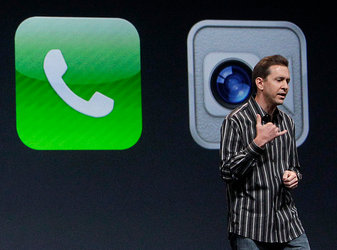Mr. Elop painted the bleak outlook as he prescribed a radical cure for the Finnish mobile phone pioneer: The rejection of the company’s own Symbian smartphone operating system for a shotgun wedding to Microsoft, itself stumbling badly with smartphone software. After that, sales slumped sharply, losses mounted and huge layoffs followed.
On Thursday, he delivered unexpected good news: a profit. Sales of its new smartphone line, the Lumia, powered by Microsoft’s Windows Phone operating system, soared more than 50 percent in the fourth quarter of last year, according to preliminary financial information.
In what was seen as a make-or-break quarter, Mr. Elop said Nokia would break even or turn a 2 percent profit rather than report a loss as large as 10 percent, as analysts expected.
Nokia will report its earnings on Jan. 24.
Wall Street reacted to the announcement by sending Nokia’s American depositary receipts up 18.67 percent, or 70 cents, to $4.45.
“While we definitely experienced some tough challenges in the first half of 2012, we are managing through these issues,” Mr. Elop said in a conference call with journalists.
What Nokia has accomplished under Mr. Elop is to produce a line of increasingly competitive smartphones that are starting to draw favorable comparisons with those from Samsung and Apple, the two companies most responsible for knocking Nokia from its lofty perch.
“The Lumia smartphones are night-and-day different from Nokia’s old Symbian handsets,” said Francisco Jeronimo, an analyst with the International Data Corporation in London. “I think what we are starting to see now is what will be a steady turnaround in Nokia’s fortunes.”
The company, which dominated the cellphone business until Apple introduced its iPhone in 2007, still has a long way to go to achieve its former stature. In the third quarter, Nokia held on to a 4 percent share of the global smartphone market, and was ranked a distant No. 10 in the sector, according to Strategy Analytics, a research firm.
Samsung and Apple, the No. 1 and No. 2 smartphone makers, together had 50 percent of the global smartphone market, and their sales were growing. While its competitors rose, Nokia has generated nearly 5 billion euros ($6.5 billion) in losses under Mr. Elop, and eliminated a third of its work force.
The key to its turnaround was the introduction in October of the top-of-the-line Lumia 920 and 820, which used the new Windows Phone 8 operating system. Since then, Nokia has spent heavily on advertising in Britain and Europe to promote the models. The company will not disclose how much it had spent on its campaign, but its television ads were ubiquitous over the holidays, said Neil Mawston, an analyst at Strategy Analytics in London.
The heavy promotion, which was aided by Microsoft’s own advertising, has helped the company recapture some of its lost glory, Mr. Mawston said.
But he warned that “Nokia still lacks the true killer phone that will enable it to compete with the iPhone 5 or Samsung Galaxy S III.” He expected Nokia’s share of the global smartphone market to rise to 6 percent by the end of the year.
The company’s financial position is likely to revive even more quickly as a result of the strict cost-cutting imposed by Mr. Elop, who ran Microsoft’s business software division before joining Nokia in late 2010.
Since then, Nokia has shut factories across Europe. Last month, the company sold its 540,000-square-foot glass-and-wood headquarters in the Helsinki suburb of Espoo to Finnish investors, and leased it back. The maneuver netted Nokia 170 million euros.
Besides a more competitive array of phones, Nokia has discarded its market-leader mentality. Employees are now routinely traveling in economy class and sharing rides to airports. Workers no longer use costly telephone conference calling but speak in group teleconferences using less expensive Internet calling services.
“The company is a lot smaller now but people are working better together,” said Susan Sheehan, a Nokia spokeswoman. “Everyone has been pitching in.”
Even at Nokia Siemens, the company’s long-suffering network equipment venture, the future is looking brighter than it was two years ago. On Thursday, Nokia said the unit, which contributes about 40 percent of total sales, would report an operating profit for the quarter, its third consecutive quarterly profit.
Nokia, in its announcement to investors, even revised the operating profit margin forecast at the venture to 13 to 15 percent of sales, up from a range of 4 to 12 percent.
Looking ahead, Nokia said it expected to return to an operating loss of 2 percent of sales because of the first-quarter postholiday buying lull and fierce competition. But the results for the coming three months could vary widely.
Pete Cunningham, an analyst at Canalys, a research firm in Reading, England, said that Nokia still faced challenges. “2013 could still turn out to be another very difficult year for Nokia. It is way too premature to say that the company has made a turnaround.”
Mr. Cunningham said he used the Lumia 920, Nokia’s newest smartphone, during the Christmas holidays and liked it.
“But the more I used the phone, the more apparent it became to me that there are big gaps between Lumia and its competitors in terms of the functionality and usability of its apps,” Mr. Cunningham said.
“I still think there is a lot of work to be done on Lumia.”
Article source: http://www.nytimes.com/2013/01/11/technology/nokia-sees-results-from-new-smartphone-line.html?partner=rss&emc=rss



